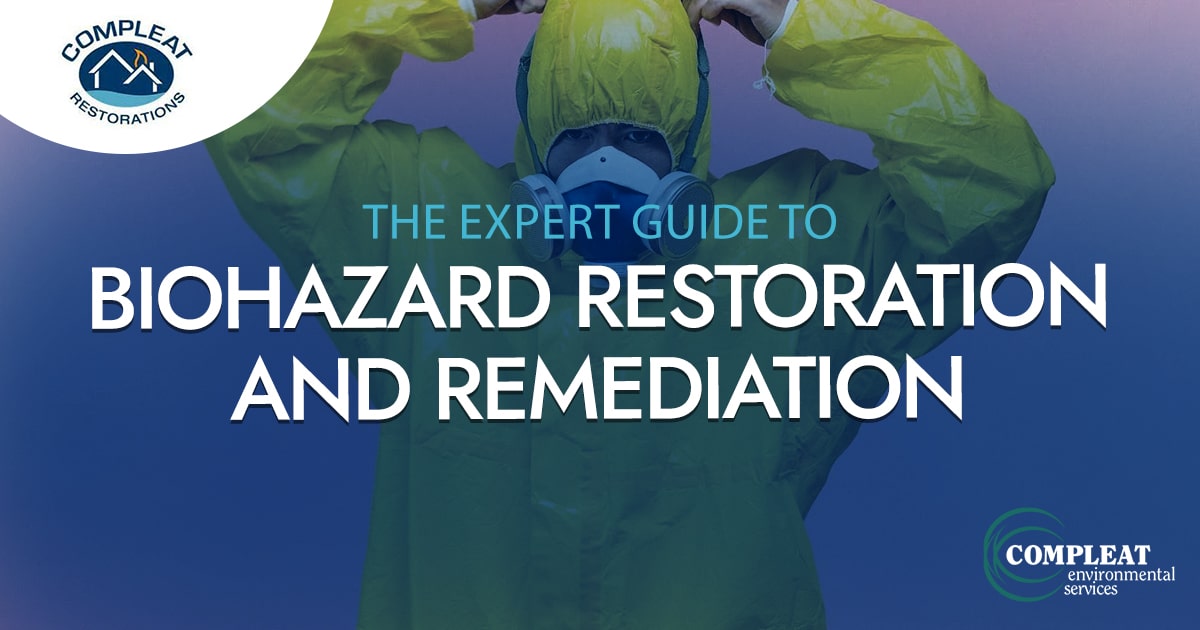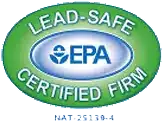Biohazard restoration and cleanup is crucial in the safety and well-being of individuals and the environment. To protect yourself and others, understanding the proper procedures is vital, whether you’re dealing with the aftermath of a crime scene for law enforcement, an infectious disease outbreak, or any other biohazard cleanup.
Let’s delve into the biohazard restoration world and learn about this specialized field’s importance. This blog post will cover key topics related to biohazard restoration and cleanup, equipping you with the knowledge needed to make informed decisions and prioritize safety.
Understanding Biohazard Emergency Cleanup Services
Biohazardous materials come in all variations, some obvious and others not so much. Hazards can include blood, bodily fluids, medical waste, chemicals, and infectious agents. Exposure to biohazard materials can lead to severe health complications like infections, respiratory issues, and even death.
Recognizing and understanding the types of biohazardous materials and environments is crucial to mitigate risks safely. Examples of biohazardous materials include:
- Blood and other bodily fluids
- Medical waste (syringes, bandages, contaminated equipment)
- Animal or human remains
- Chemicals (such as formaldehyde or pesticides)
- Pathogens (bacteria, viruses, fungi)
Awareness of these materials and their potential dangers empowers individuals and organizations to take appropriate precautions and engage professional biohazard restoration services when needed.
Biohazard Restoration Risk Assessment
A thorough risk assessment must be conducted before initiating any biohazard restoration or remediation project. This assessment helps identify potential hazards, evaluate the extent of contamination, and determine the necessary safety measures and equipment required.
A comprehensive risk assessment typically involves the following steps:
- Site evaluation: Assess the affected area, identify potential biohazards, and determine the scope of the restoration project.
- Hazard identification: Identify specific biohazards present, such as bloodborne pathogens or toxic chemicals, and evaluate their potential risks.
- Exposure assessment: Evaluate the likelihood and duration of exposure to biohazards, considering factors like ventilation and containment measures.
- Risk characterization: Assess the identified hazards’ severity and potential impact on human health and the environment.
Personal Protective Equipment (PPE)
When dealing with biohazard cleanup, proper personal protective equipment (PPE) is necessary. PPE acts as a barrier between individuals and hazardous materials, reducing the risk of infection or injury.
Various types of PPE are employed during biohazard restoration projects, including:
- Protective clothing: Disposable suits, gloves, and boots to prevent direct contact with hazardous materials.
- Eye and face protection: Safety goggles or face shields to shield the eyes and face from splashes or airborne contaminants.
- Respiratory protection: Masks or respirators filter out harmful airborne particles and protect against respiratory hazards.
It is crucial to use the appropriate PPE for each specific biohazard situation. Individuals can minimize the potential risks associated with biohazardous materials and environments by donning the necessary protective gear.
Containment Procedures
Effectively containing biohazardous areas is vital to prevent cross-contamination and the further spreading of hazardous materials. Proper containment procedures isolate the affected areas, reducing the risk of exposure to occupants and limiting the environmental impact.
Several methods and equipment can be used for containment, including:
- Physical barriers: Erecting plastic sheeting or temporary walls to isolate the affected area from the rest of the property.
- Airflow control: Implement negative air pressure systems and scrubbers to capture and filter airborne contaminants effectively.
- Secure storage: Using designated containers or bags to store and transport hazardous materials during the cleanup process safely.
By implementing these containment measures, professionals can maintain a controlled environment, minimize risks, and facilitate restoration.
Decontamination Methods
Decontamination is a crucial step in biohazard remediation. This process involves removing, disinfection, and sanitizing biohazardous materials and affected surfaces, ensuring harmful pathogens and contaminants are fully eliminated.
Different approaches to decontamination may be appropriate based on factors such as the nature of the biohazard, the affected surfaces, and the level of contamination. Some common decontamination methods include:
- Chemical disinfection: Using disinfectants and cleaning agents to eliminate bacteria, viruses, and other pathogens from surfaces.
- Thermal decontamination: Utilizing high temperatures or steam to disinfect and sterilize equipment, furniture, or other items.
- Biological treatment: Employing specialized enzymes or bacteria to break down and neutralize biohazardous materials safely and eco-friendly.
By employing effective decontamination methods, professionals can restore the affected area to a safe and habitable condition.
Proper Disposal Of Biohazardous Materials
The safe disposal of biohazardous waste is crucial to biohazard restoration and cleanup. Improper disposal can lead to environmental contamination and pose risks to public health.
Strict adherence to regulations and guidelines ensures the responsible management of biohazardous materials.
Proper disposal protocols may include:
- Segregation and packaging: Separating different biohazardous materials and packaging them in leak-proof containers or bags.
- Transportation: Following established protocols for safely transferring biohazardous waste to licensed facilities.
- Disposal at licensed facilities: Check with https://compleatrestorations.com, state, and federal regulations for authorized disposal sites.
Biohazard restoration professionals adhere to these disposal procedures and help protect the environment and prevent potential risks to the community.
Hiring Trained Professionals For Crime Scene Cleanup Services
Handling biohazard restoration projects requires specialized knowledge, skills, and equipment.
Hiring trained professionals who specialize in biohazard restoration and remediation offers numerous benefits, including:
- Expertise and experience: Professionals have the knowledge and experience to assess risks, develop effective restoration plans, and ensure thorough decontamination.
- Safety and compliance: Trained experts follow safety protocols, possess the necessary certifications, and adhere to legal regulations, minimizing risks and ensuring compliance.
- Efficient restoration: Professionals utilize specialized equipment and techniques to expedite the restoration process while maintaining high quality and safety standards.
When seeking professional assistance, it is important to consider factors such as reputation, certifications, and customer reviews to ensure you choose a reliable and reputable company or contractor.
Contact Compleat Restoration for Assistance
Biohazard restoration and cleanup require meticulous attention to detail, adherence to safety protocols, and specialized expertise. By understanding the risks associated with biohazards, conducting thorough risk assessments, using proper PPE, implementing effective containment procedures, employing appropriate decontamination methods, and adhering to adequate disposal protocols, professionals can restore biohazard environments to safe conditions.
For biohazard restoration and remediation needs, it is crucial to prioritize safety and seek the assistance of trained professionals. Through the assistance of trained professionals, individuals and organizations can ensure the health and well-being of all involved and contribute to a safer and healthier environment. Remember, expertise and proper procedures are key when it comes to biohazard restoration.
Contact Compleat Restorations, a trusted biohazard restoration company, for professional assistance in handling cleanup and restoration projects. Protect yourself, your loved ones, and your property by choosing the experts in biohazard restoration.
Contact Compleat Restorations now to discuss your biohazard restoration needs or learn more about biohazard cleanup.









